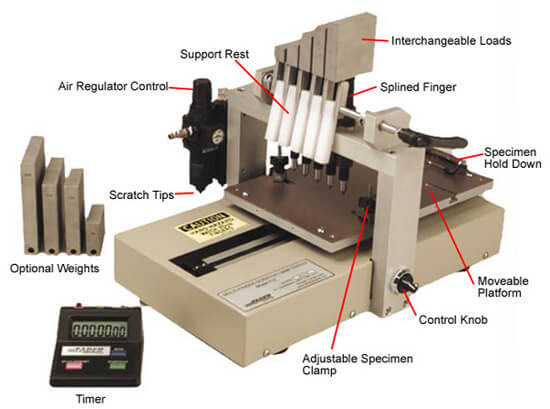
NewsInformation Center
What are some common testing standards for multi-finger scratch and mar testing?
2023/05/12
Multi-finger scratch and mar testing is a testing method widely used in various industries, such as automotive, electronics, construction and other fields. They can help evaluate specifications such as wear resistance, durability and wear resistance of materials, surface treatments, coatings and more.


The following are some common test standards for multi-finger scratch and mar tester:
ASTM D3363-05
The ASTM D3363-05 procedure is a general standard applicable to most surface materials and can be used to compare different coating materials. The procedure uses pencil hardness values (i.e. HB, 2H, 3H, 4H, 5H, 6H) to test the surface of the sample. During the test, it is necessary to use pencils of different hardness to make multiple scratches to determine the minimum hardness level that can scratch the material.
ASTM C501-74
The ASTM C501-74 procedure is suitable for evaluating the abrasion resistance and damage of building materials. The test requires the use of multiple round stickers or round steel balls to scratch the surface of the paint or material several times, and then observe the damage on the surface of the sample. The damage degree of the sample surface can be determined according to factors such as the remaining color, damage or wear degree after the sample surface is scratched.
ASTM D1044-05
ASTM D1044-05 procedure applies to abrasion resistance testing of plastics and coatings. The test requires the surface of the sample to be abraded a certain number of times with standard sandpaper or a wiper, and then observed for the degree of surface wear and color change.
The above test standards are only a small part of the many test methods. Different industries, different materials and different application scenarios require different testing methods to ensure accurate and reliable test results.
Previous: What are the applications of a multi-finger scratch and mar tester?
N e x t : Exploring the Key Features and Benefits of Non-woven Tearing Tester



